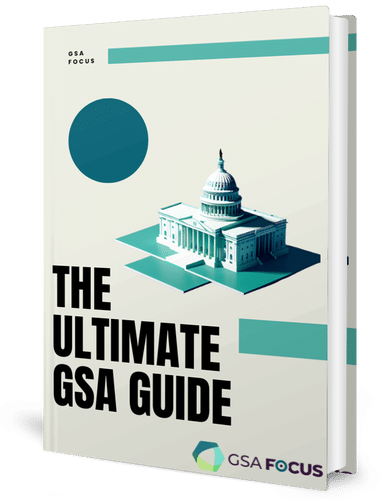GSA Contracts change each year based on the needs of the government.
However, the changes between 2019 and 2020 are significant for anyone interested in getting a GSA Contract.
MAS Consolidation
Table of Contents
ToggleWhen it comes to the MAS Consolidation, 2020 might prove to be the most active years for federal contractors holding General Services Administration (GSA) and Federal Supply Schedule (FSS) contracts.
This change is the first in a series of GSA changes and will address the GSA’s most publicized action, which is the consolidation of its federal supply schedules into one schedule.
In October 2019, the GSA released solicitation that would consolidate all of the tenders for its 24 federal supply schedules. These consolidations will involve three phases.
Phase I:
Phase I applies to companies that don’t currently hold an FSS contract. This phase is for companies seeking to obtain a new deal.
Phase II:
Phase II is for companies that currently hold one or more FSS contracts. This phase will involve the mass modification of existing contract holders. It will then incorporate the new set of terms and conditions.
Phase III:
Phase III, which is the final phase, is meant for contractors that possess more that one FSS contract. This phase will consolidate the multiple schedule contracts held by one contractor into one, unified agreement.
FSS contractors and companies that are contemplating getting an FSS contract should consider many factors. Companies should hold off submitting new offers for an FSS contract until the GSA gets settles down.
Contractors should review GSA’s Mass Modification with caution. That way, they can assess any potential impact it may have on them. Contractors should also coordinate communications with the GSA and confirm that their internal management systems can handle the consolidations.
MAS Consolidation Timeline
Phase I:
On September 30, 2019, at midnight, the government’s final day of the 2019 fiscal year, GSA closed all of the 24 GSA schedules to new offers. GSA released the single GSA MAS schedule on October 1, 2019. This date was significant, especially for businesses pursuing a GSA Contract.
Despite this, the GSA will continue to review the offers received by September 30, 2019. Although, the following day, people will have to submit their proposals following the new MAS schedule solicitation guidelines.
Phase II:
The second phase, which is for existing GSA schedule contractors, started in January 2020. At this time, GSA issued a mass modification that began the transition from the updated GSA schedule contractors to the new MAS Schedule solicitation.
The moment you accept the mass modification, all of your terms, conditions, and SINs will automatically update to the new MAS Schedule solicitation. Contractors only had until July 2020 to review and sign the mass modification document. Of course, there is some information that did not change. A few examples of the information that remained unchanged include the GSA contract expiration date, contract numbers, number of remaining options, and negotiated items.
If you have multiple GSA schedule contracts, you will receive a mass modification for each contract, as they haven’t wholly consolidated. Current contractors are also unable to add SINs outside the scope of their existing GSA Schedule until they sign the new mass modification.
Phase III:
The final stage will include existing GSA schedule contractors with multiple GSA schedule contracts. In July 2020, the GSA began reaching out to the companies that held multiple GSA Schedule Contracts. At this point, the GSA worked one on one with each of these companies to figure out the best option for consolidating multiple GSA Schedules.
The GSA wants people to know that they will receive options for consolidating their GSA contracts. The GSA will also work with you to help determine the best options for your company based upon your contracts’ status. Due to the extent of this phase, there is no end date. The GSA wants to ensure that your GSA Contracts continue to cover any BPAs that you may hold.
The MAS Program Management Office will coordinate with all of your Contracting Officers during this whole process.
GSA Changes in 2020
Throughout 2020, the federal agency contracting officers have conducted a noticeable merger as they consolidated two-dozen purchasing schedules into one.
At an ACT-IAC presentation on October 9, 2019, Stephanie Shutt, the director of the multiple awards schedule program office at GSA, stated, “Agencies won’t see a whole lot of differences… until July, the biggest change will be in eBuy at the end of July. It will be more user-friendly and use real words instead of random [contract] numbers they have to guess.”
On October 1, 2019, the GSA completed the first phase of the merger. It provided a simplified format, streamlined terms and conditions, and new categories and SINs. This solicitation marked the completion of the first of the three-phase series.
The third phase will have the most significant changes to the federal contracting officers. Those contract consolidations will reflect in the agency’s eBuy platform and its eLibrary contract award repository.
Consolidating the 24 multiple award schedule contracts into a single format will make it noticeably easier for contractors to offer their services, products, and solutions. It will also make it easier for the agency partners to find them.
The GSA has been working to reshape how agencies will see the items that are on the schedule. This process will also condense the extensive list of SINs from 900 down to 320. Shutt stated that the schedule would leverage the “large category” selections. She said that the GSA would consider using products and services subcategories and broad categories as selection devices, giving businesses the option to push SIN’s into the background.
This approach will make it less labor-intensive for the contracting officers who won’t have to click as many selections. However, Shutt also conceded that the changes might not be entirely applicable all at once.



